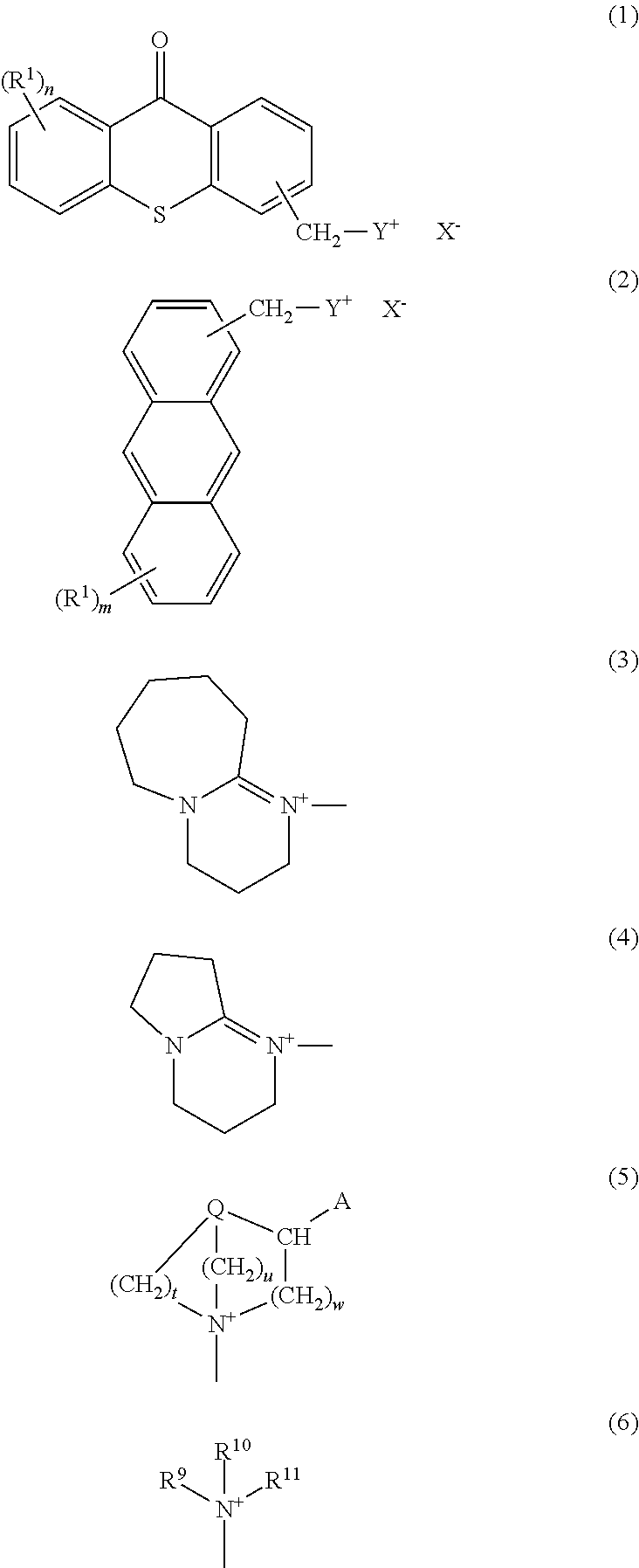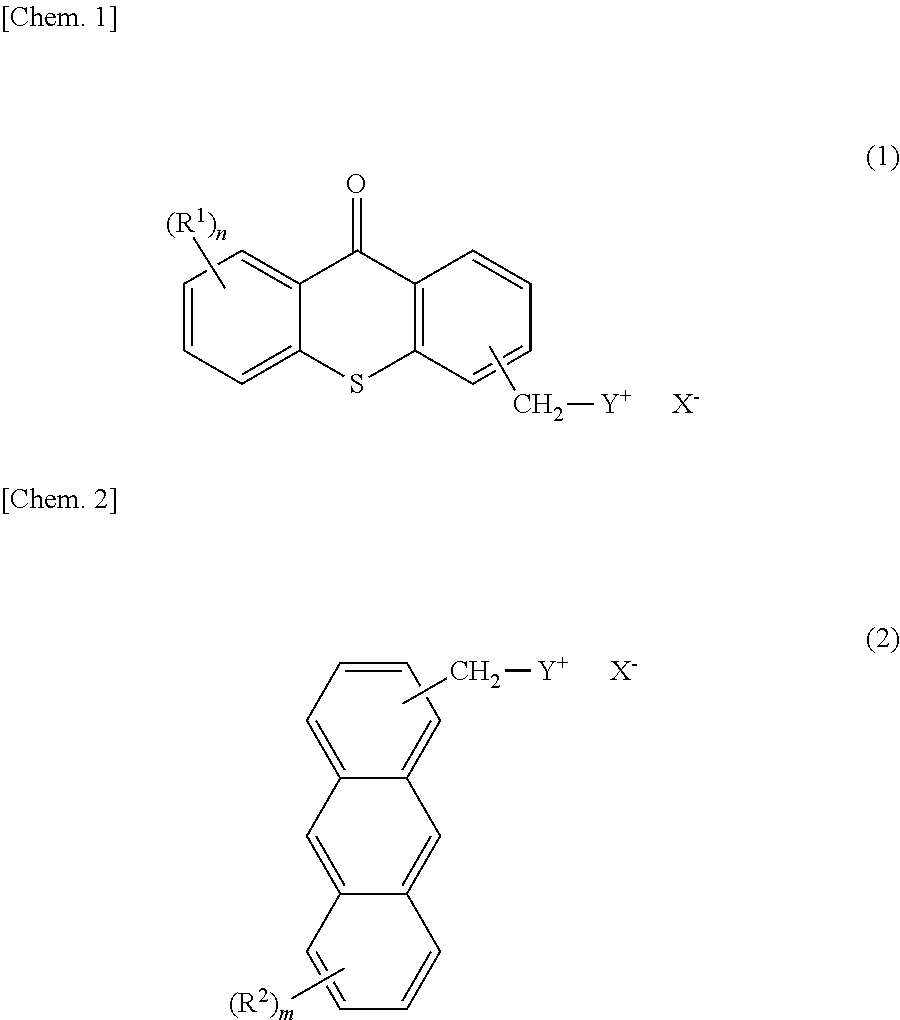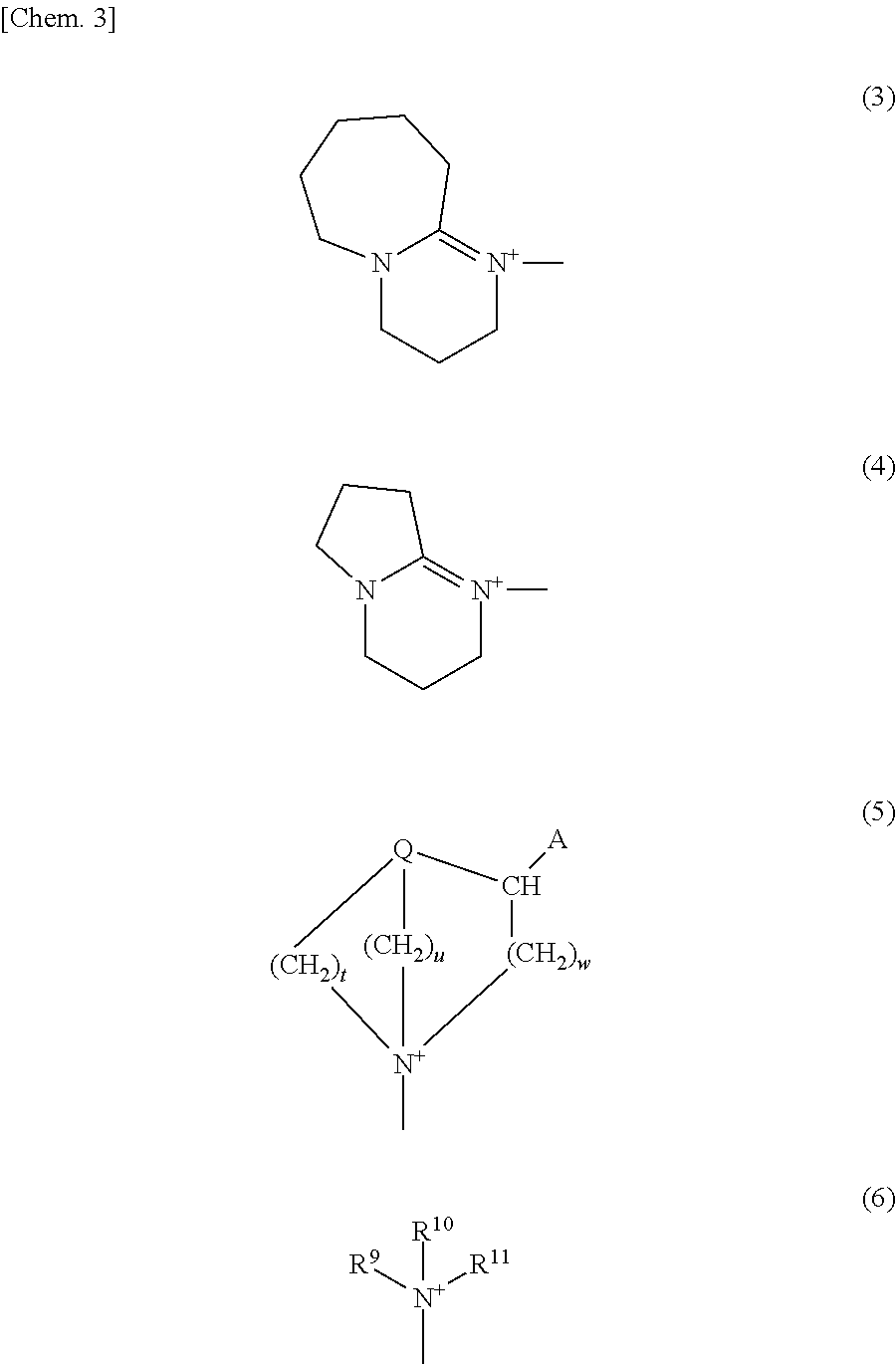Photobase generator
- Summary
- Abstract
- Description
- Claims
- Application Information
AI Technical Summary
Benefits of technology
Problems solved by technology
Method used
Image
Examples
example 1
Synthesis of 8-(9-OXO-9H-thioxanthen-2-yl)methyl-1,8-diazabicyclo[5.4.0]-7-undec enium tetraphenylborate {a photobase generator represented by chemical formula (1-1)}
(1) Synthesis of Methylthioxanthone (Intermediate 10)
[0085]Into an Erlenmeyer flask was charged 139 g of sulfuric acid, and 10 g of dithiosalicylic acid (Wako Pure Chemical Industries, Ltd.) was added thereto. After stirring at room temperature (about 25° C.) for 1 hour and then cooling in an ice bath, a cooled solution was obtained. Subsequently, 25 g of toluene was dropped slowly while the temperature of the cooled solution was kept at 20° C. or lower, and then the temperature was returned to room temperature (about 25° C.) and stirring was continued for additional 2 hours, so that a reaction liquid was obtained. While 815 g of water contained in a beaker was being stirred, the reaction liquid was added thereto slowly, and then a precipitated yellow solid was collected by filtration. The yellow solid was dissolved in ...
example 2
Synthesis of 8-(10-butoxy-9-anthryl)methyl-1,8-diazabicyclo[5.4.0]-7-undecenium tetraphenylborate {a photobase generator represented by chemical formula (2-2)}
(1) Synthesis of 9-butoxyanthracene (Intermediate 20)
[0089]A mixed solution was prepared by adding 10.9 g of an throne (Tokyo Chemical Industry Co., Ltd.), 23.6 g of toluene, 11.6 g of n-butyl bromide (Tokyo Chemical Industry Co., Ltd.), and 1.1 g of tetrabutylammonium bromide (Wako Pure Chemical Industries, Ltd.) to a four-necked, 100-mL flask. To this was added 13.2 g of 48% aqueous potassium hydroxide solution, followed by heating. After a reaction was performed under reflux for 5 hours, the reaction liquid was cooled to room temperature (about 25° C.) and was separated into an organic layer and an aqueous layer with a separatory funnel. The aqueous layer was extracted twice with 10 g of toluene, which were then combined with the organic layer. Subsequently, the combined organic layer was washed with 15 g of water three tim...
example 3
Synthesis of 1 (9-anthryl)methyl-1-azabicyclo[2.2.2]octanium tetraphenylborate {a photobase generator represented by chemical formula (2-5)}
[0093]In chloroform in a 50-ml eggplant flask was dissolved 2.0 g of 9-chloromethylanthracene (Aldrich), and 1.0 g of 1-azabicyclo[2.2.2]octane (Aldrich) was added thereto little by little (after the addition, some generation of heat was observed). Stirring was continued at room temperature (about 25° C.) for 1 hour, so that a reaction liquid was obtained. The reaction liquid was dropped slowly into an aqueous solution composed of 4.0 g of sodium tetraphenylborate and 40 g of water contained in a 100-ml eggplant flask and further stirred at room temperature (about 25° C.) for 1 hour. Then the aqueous layer was removed by a separatory operation and the organic layer was washed with water three times. The organic layer was condensed with an evaporator, so that 5.4 g of a white solid was obtained. This white solid was recrystallized from acetonitri...
PUM
| Property | Measurement | Unit |
|---|---|---|
| Wavelength | aaaaa | aaaaa |
| Wavelength | aaaaa | aaaaa |
| Molar density | aaaaa | aaaaa |
Abstract
Description
Claims
Application Information
 Login to View More
Login to View More - R&D
- Intellectual Property
- Life Sciences
- Materials
- Tech Scout
- Unparalleled Data Quality
- Higher Quality Content
- 60% Fewer Hallucinations
Browse by: Latest US Patents, China's latest patents, Technical Efficacy Thesaurus, Application Domain, Technology Topic, Popular Technical Reports.
© 2025 PatSnap. All rights reserved.Legal|Privacy policy|Modern Slavery Act Transparency Statement|Sitemap|About US| Contact US: help@patsnap.com



